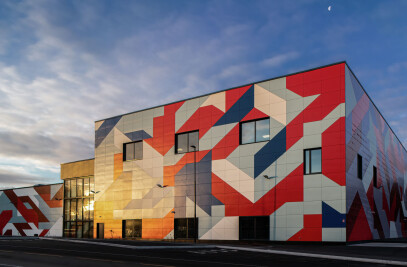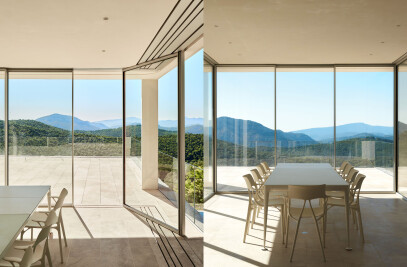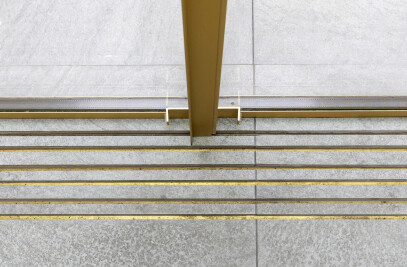Covering a total land area of 2 million square meters and with over 5 million square meters of floor space, TIC is a landmark development/new urban town developed by Times China in Guangzhou. At the heart of this new development is the new TIC Art Center, already an iconic symbol and hotspot for local citizens.

With a project investment totalling around 180 million yuan, DOMANI Architectural Concepts carried out the overall design of the project, with their scope including landscape, architecture, interiors, products, and more.

At its heart, the scheme is a truly magnificent landscape concept. The site’s main circulation route, divided into upper and lower levels, is a path of red ceramic brick that guides people toward the Art Center. A black gravel paved garden meanwhile allows for a more open and free area to stop and rest. The two landscape levels intertwine to offer a rich, multi-directional, and intuitive route. At the centre of the landscape is an immense round pool, one of the largest artificial water spaces in Guangzhou and a hub for visitors.
A mesh-like double-layer curtain wall system provides a visual highlight and is a technical focus of the building. The unique grid masonry effect is achieved by combining traditional ‘ceramic bricks’ with a modern curtain wall structural design. Equilateral triangular modules are assembled to form the mesh-pattern façade.

The inner-layer curtain wall adopts ultra-clear glass in an economical size with single glass pieces at 2200 mm, a dimension that serves to enlarge the view from indoors and ensure a fast installation.

The ’passive design’ of the building minimizes its energy consumption with a double-layer curtain wall system and insulated Low-E tempered glass to the east, south, and west facades. The 240mm-thick side openwork brick curtain wall system creates a sunlight filter, preventing glare caused by direct sunlight while enhancing the softness of light through refraction.

An arch with a maximum span of 29-meters is featured on the facade wall. The top of the arch includes a cantilever beam and upturned overhanging folding slabs so that it’s higher than the beams between the floors.

The interior concept is based on the idea of ‘de-interiorization.’ In contrast with traditional interior lighting solutions, a large intelligent light film ceiling is employed to obtain a balance between indoor lighting and outdoor daylight. This lighting strategy is similar to the control of top lighting in photography, helping to create a sense of vastness in the space. Secondly, electro-mechanical and fire systems strictly follow the beam and columns system and finally, interior materials specified derive directly from architectural elements, linking the interior to the exterior while also reducing construction costs and risks.


































